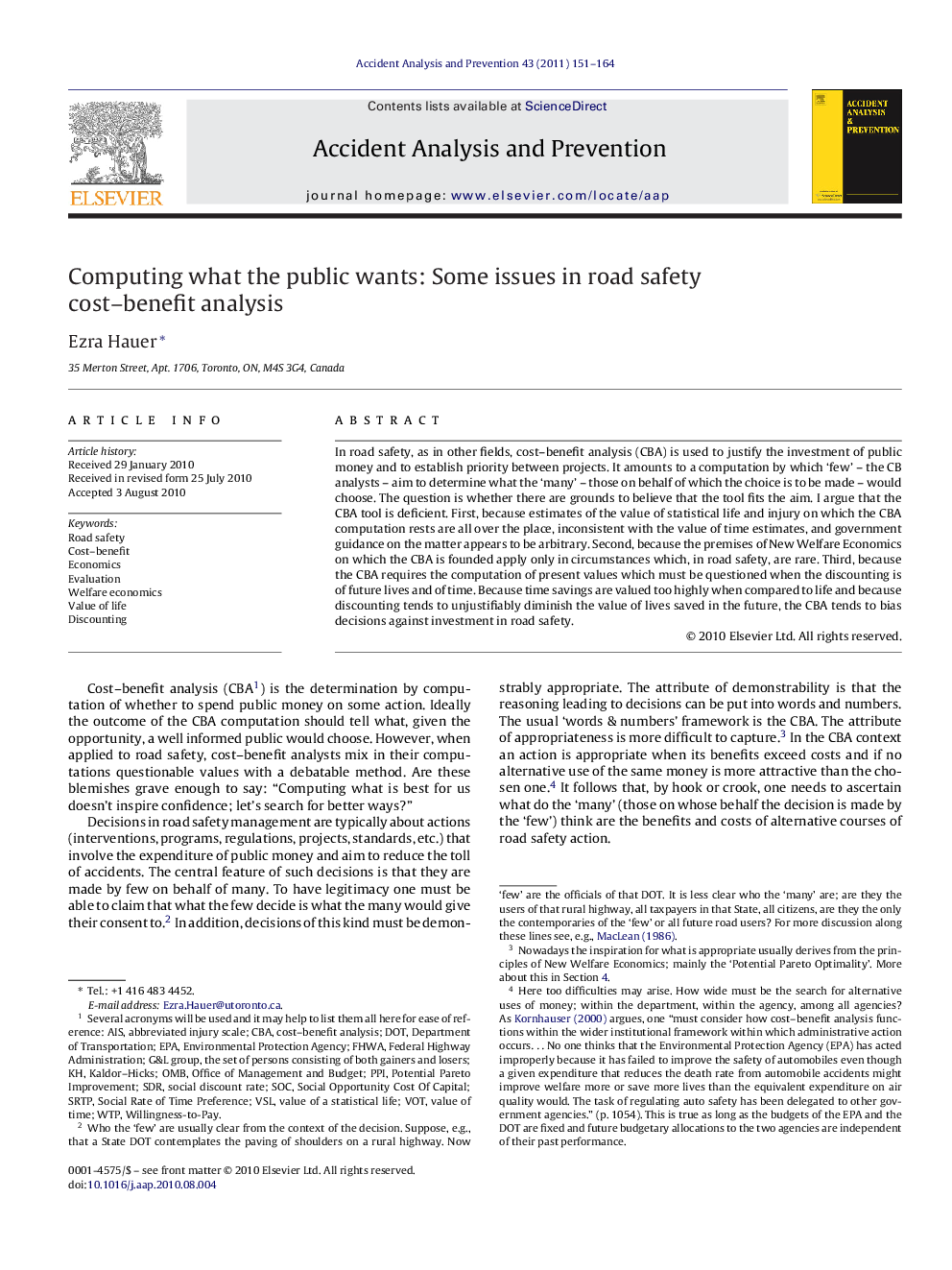| کد مقاله | کد نشریه | سال انتشار | مقاله انگلیسی | نسخه تمام متن |
|---|---|---|---|---|
| 572744 | 877377 | 2011 | 14 صفحه PDF | دانلود رایگان |

In road safety, as in other fields, cost–benefit analysis (CBA) is used to justify the investment of public money and to establish priority between projects. It amounts to a computation by which ‘few’ – the CB analysts – aim to determine what the ‘many’ – those on behalf of which the choice is to be made – would choose. The question is whether there are grounds to believe that the tool fits the aim. I argue that the CBA tool is deficient. First, because estimates of the value of statistical life and injury on which the CBA computation rests are all over the place, inconsistent with the value of time estimates, and government guidance on the matter appears to be arbitrary. Second, because the premises of New Welfare Economics on which the CBA is founded apply only in circumstances which, in road safety, are rare. Third, because the CBA requires the computation of present values which must be questioned when the discounting is of future lives and of time. Because time savings are valued too highly when compared to life and because discounting tends to unjustifiably diminish the value of lives saved in the future, the CBA tends to bias decisions against investment in road safety.
Research highlights▶ The result of a cost-benefit analysis in road safety depends on the value of a statistical life and on the discount rate. ▶Estimates of the value of a statistical life and of the social discount rate are all over the place. ▶ It is not clear that discounting future life and time is justifiable. ▶ As a consequence the result of a CBA in road safety cannot be trusted to tell which option people would prefer.
Journal: Accident Analysis & Prevention - Volume 43, Issue 1, January 2011, Pages 151–164